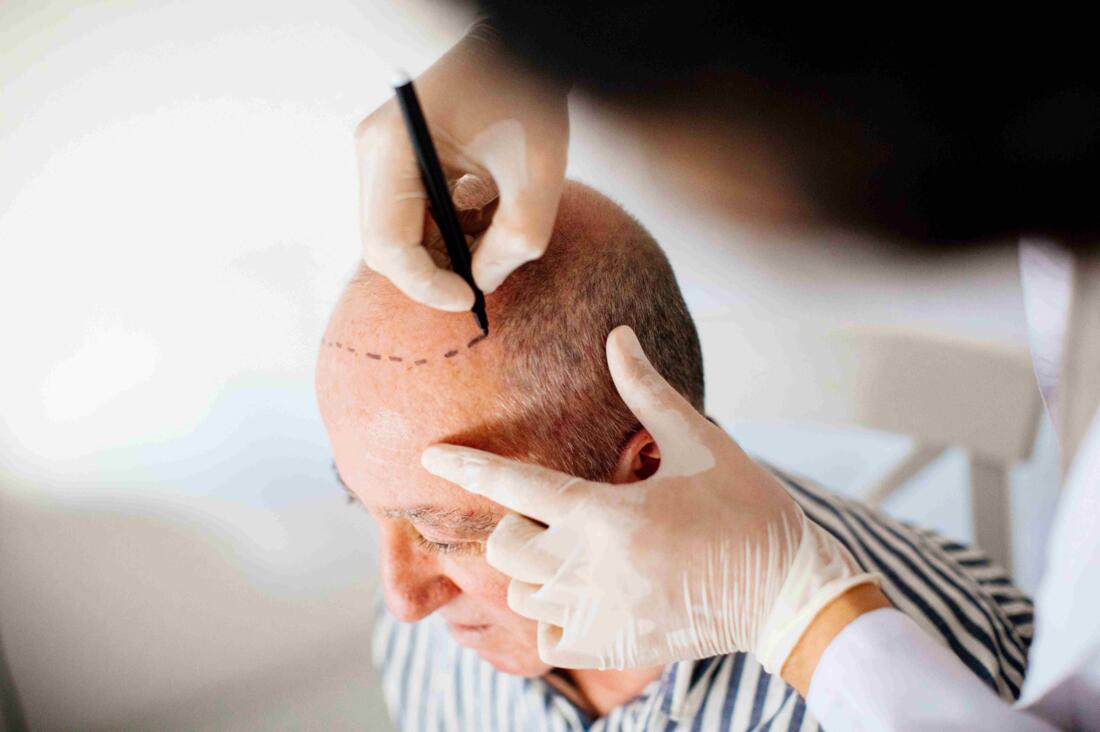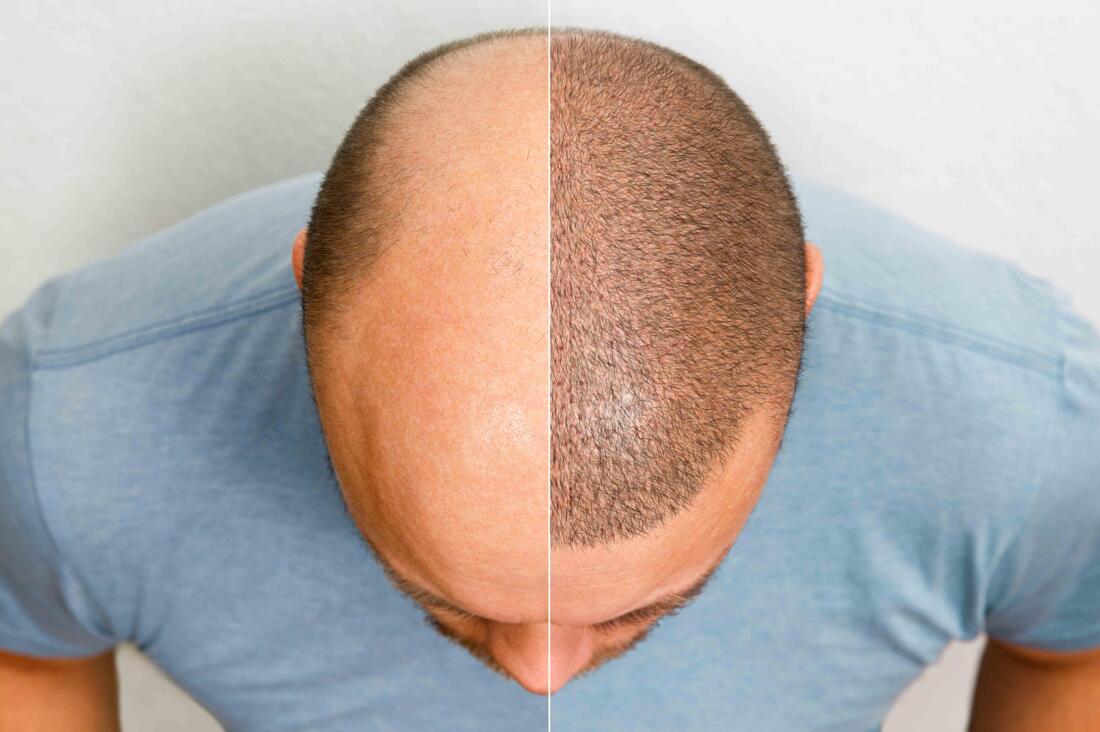Losing hair can be a troubling situation, impacting both the head and one's self-assurance and belief in oneself. Thankfully, the realm of hair rejuvenation has made great strides, providing fresh optimism for individuals dealing with hair loss.
Overcoming Hair Loss
Advanced hair transplantation techniques now offer more refined and efficient procedures, delivering results that appear natural and involve minimal discomfort. Follicular Unit Extraction (FUE) and Follicular Unit Transplantation (FUT) are the two most sought-after methods, each presenting distinct benefits. These methods entail the meticulous extraction and placement of hair follicles to achieve the most authentic-looking new hair growth possible.

FUE Method
The FUE technique has become increasingly popular because it is minimally invasive and does not leave a linear scar. During this method, hair follicles are removed from the scalp directly, without the use of a scalpel or stitches, leading to a faster recovery and reduced discomfort after surgery. The precision of this approach ensures that the transplanted hair aligns with the natural growth pattern, blending seamlessly with existing hair. Furthermore, recent advancements in robotic technology have improved the accuracy and effectiveness of the FUE procedure.

FUT Method
Alternatively, FUT, or strip surgery, involves removing a small strip of tissue from the back of the scalp where hair is more resistant to balding. This strip is then dissected into individual follicles and transplanted to areas experiencing hair loss. Although this method may result in a linear scar, it is usually concealed by the patient's existing hair and is often a more economical choice for those needing a large number of grafts.
Both FUE and FUT procedures boast impressive success rates and can be customized to accommodate the unique needs and desires of each patient.
Thanks to these advanced techniques, individuals grappling with hair loss stand a good chance of regaining a full and natural-looking head of hair, thereby not only restoring their locks but also their self-assurance.
Understanding the Hair Growth Cycle and Its Importance
To fully appreciate the effectiveness of hair transplantation methods, it's crucial to understand the hair growth cycle. Each hair strand goes through a cycle of growth, rest, and shedding. This cycle consists of three main phases: anagen, catagen, and telogen. The anagen phase represents active growth, lasting several years, while the catagen phase is a transitional stage lasting a few weeks, leading to the telogen phase, where hair rests before falling out. A well-timed transplantation can align with this cycle, ensuring that the newly transplanted hair integrates seamlessly and begins to grow in harmony with existing hair, maximizing the overall aesthetic outcome.
Post-Transplant Care: Essential for Optimal Results
After undergoing hair transplantation, proper post-operative care is vital for ensuring optimal results. Patients are typically advised to follow a specific regimen that includes avoiding strenuous activities, protecting the scalp from sunlight, and refraining from touching or scratching the transplanted area. Additionally, the use of prescribed topical solutions or medications may be recommended to promote healing and encourage hair growth. Adhering to these guidelines not only aids in recovery but also helps to ensure that the hair follicles take root effectively, leading to a successful and satisfying outcome for the patient.
The Role of Nutrition in Hair Health and Growth
Nutrition plays a pivotal role in maintaining healthy hair and promoting growth, especially post-transplant. A balanced diet rich in vitamins and minerals contributes to the overall health of hair follicles. Nutrients such as biotin, zinc, and vitamins A, C, D, and E are particularly beneficial for hair strength and growth. Incorporating foods like leafy greens, nuts, seeds, and lean proteins can enhance hair health. Additionally, staying hydrated is crucial, as water supports the transport of nutrients to hair follicles. A commitment to a nutritious diet can significantly impact the success of hair restoration efforts, complementing the physical procedures.
Psychological Benefits of Successful Hair Restoration
Regaining hair through transplantation can profoundly impact a person's psychological well-being. Many individuals experience heightened self-esteem and confidence after successful hair restoration. The transformation can lead to improved social interactions, enhanced personal relationships, and greater satisfaction in professional settings. Furthermore, studies have indicated that individuals with fuller hair often feel more attractive and youthful. This psychological uplift is an important consideration for anyone contemplating hair restoration, as it underscores the emotional benefits that accompany the physical changes, making the decision to proceed with treatment even more compelling.
Exploring Alternative Hair Restoration Options
While hair transplantation is a popular choice, several alternative methods exist for those seeking to address hair loss. These include topical treatments like minoxidil, which stimulates hair growth, and oral medications such as finasteride, which can prevent further hair loss. Additionally, non-invasive options like low-level laser therapy or PRP (platelet-rich plasma) treatments are gaining traction. Each of these alternatives has its advantages and potential drawbacks, depending on individual circumstances such as the extent of hair loss and personal preferences. Consulting with a hair restoration specialist can help individuals identify the best course of action tailored to their unique needs.
The Future of Hair Restoration: Innovations on the Horizon
The field of hair restoration is continually evolving, with promising innovations on the horizon. Researchers are exploring advancements in stem cell therapy, which holds potential for regenerating hair follicles from a patient's own cells. Additionally, 3D printing technology is being investigated for creating bioengineered hair follicles, which could revolutionize transplantation techniques. Furthermore, genetic research may lead to targeted treatments that address the underlying causes of hair loss more effectively. These advancements not only offer hope for those currently experiencing hair loss but also aim to enhance the overall efficacy and safety of hair restoration procedures in the future.
AI-Assisted Content Disclaimer
This article was created with AI assistance and reviewed by a human for accuracy and clarity.